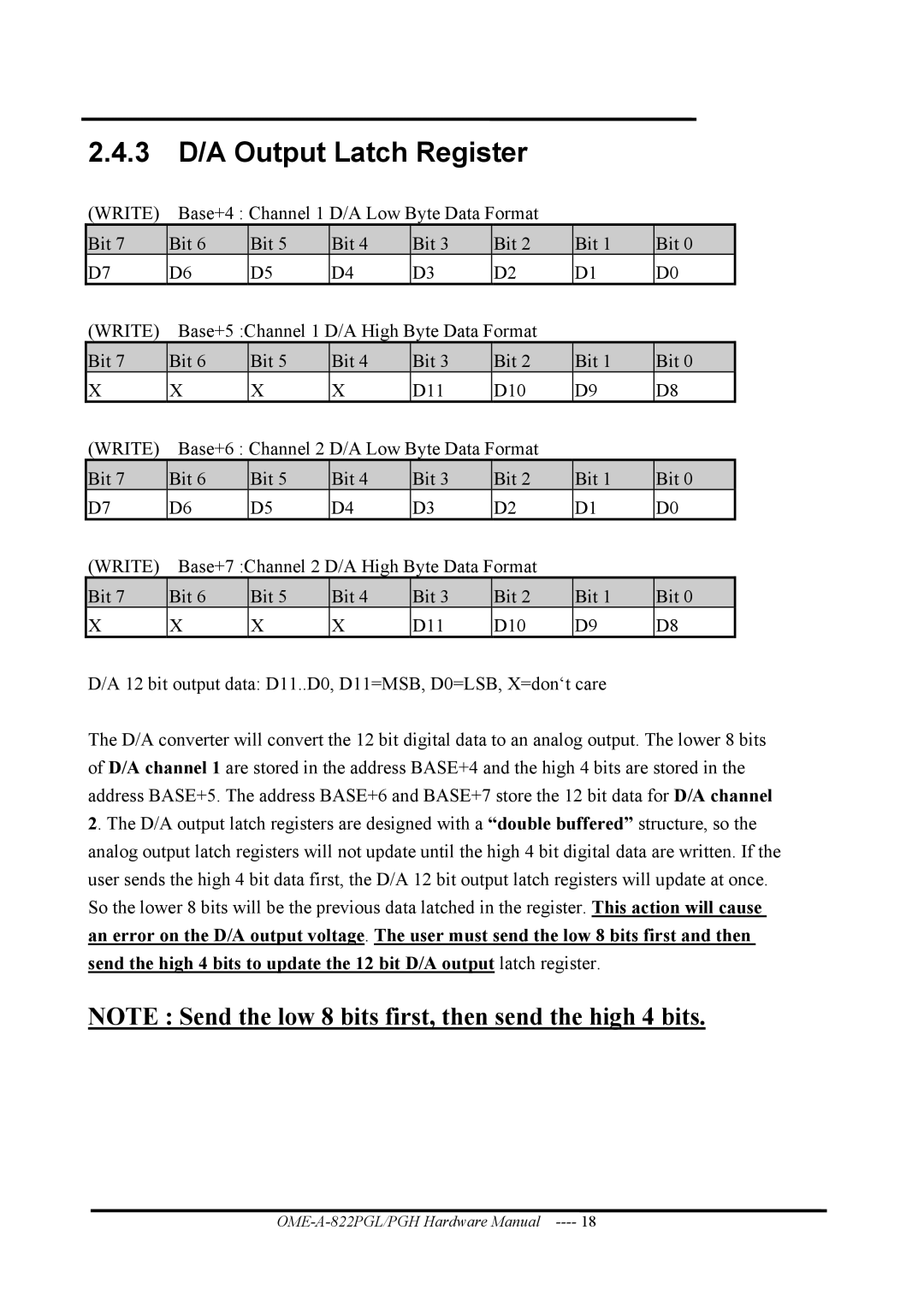
2.4.3D/A Output Latch Register
(WRITE) | Base+4 : Channel 1 D/A Low Byte Data Format |
|
| ||||
Bit 7 | Bit 6 | Bit 5 | Bit 4 | Bit 3 | Bit 2 | Bit 1 | Bit 0 |
D7 | D6 | D5 | D4 | D3 | D2 | D1 | D0 |
(WRITE) | Base+5 :Channel 1 D/A High Byte Data Format |
|
| ||||
Bit 7 | Bit 6 | Bit 5 | Bit 4 | Bit 3 | Bit 2 | Bit 1 | Bit 0 |
X | X | X | X | D11 | D10 | D9 | D8 |
(WRITE) | Base+6 : Channel 2 D/A Low Byte Data Format |
|
| ||||
Bit 7 | Bit 6 | Bit 5 | Bit 4 | Bit 3 | Bit 2 | Bit 1 | Bit 0 |
D7 | D6 | D5 | D4 | D3 | D2 | D1 | D0 |
(WRITE) | Base+7 :Channel 2 D/A High Byte Data Format |
|
| ||||
Bit 7 | Bit 6 | Bit 5 | Bit 4 | Bit 3 | Bit 2 | Bit 1 | Bit 0 |
X | X | X | X | D11 | D10 | D9 | D8 |
D/A 12 bit output data: D11..D0, D11=MSB, D0=LSB, X=don‘t care
The D/A converter will convert the 12 bit digital data to an analog output. The lower 8 bits of D/A channel 1 are stored in the address BASE+4 and the high 4 bits are stored in the address BASE+5. The address BASE+6 and BASE+7 store the 12 bit data for D/A channel 2. The D/A output latch registers are designed with a “double buffered” structure, so the analog output latch registers will not update until the high 4 bit digital data are written. If the user sends the high 4 bit data first, the D/A 12 bit output latch registers will update at once. So the lower 8 bits will be the previous data latched in the register. This action will cause an error on the D/A output voltage. The user must send the low 8 bits first and then send the high 4 bits to update the 12 bit D/A output latch register.
NOTE : Send the low 8 bits first, then send the high 4 bits.
